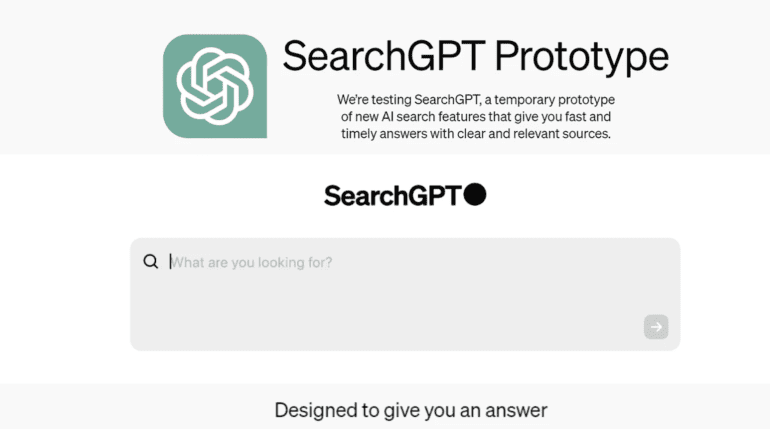- OpenAI has introduced SearchGPT, an AI-powered search engine in prototype phase.
- The tool is designed to gather feedback from early adopters before integrating successful features into ChatGPT.
- SearchGPT processes natural language queries and provides AI-generated responses rather than lists of webpages.
- Responses include citation links to original sources and may feature text, images, and content sidebars.
- The search engine supports follow-up questions, using context from previous queries to refine answers.
- Publishers can manage how their copyrighted content is used and can opt out of AI training while remaining in search results.
- OpenAI CEO Sam Altman emphasized the potential for SearchGPT to enhance search functionality and be integrated into ChatGPT.
- The company has not yet revealed if SearchGPT will be available for free or require a paid subscription.
- If incorporated into ChatGPT’s free version, it could increase competition with Microsoft’s Bing and Google’s AI Overviews.
- Future monetization may involve ads or a paid enterprise version.
Main AI News:
OpenAI has officially introduced SearchGPT, an innovative search engine leveraging its advanced artificial intelligence technology. This new tool, described as a “temporary prototype” in a blog post, is designed to collect user feedback from a select group of early adopters. The insights gained will be used to refine SearchGPT’s features before integrating the most successful elements into ChatGPT, suggesting that SearchGPT may not be available as a standalone service indefinitely.
SearchGPT operates through a conventional search box that interprets natural language queries. Unlike traditional search engines that produce lists of relevant webpages, SearchGPT delivers AI-generated responses aimed at directly answering the user’s questions. Each response includes a citation link to the original webpage used, providing users with transparency and verification of sources.
The nature of SearchGPT’s responses varies significantly depending on the complexity of the query. Simple questions might elicit a concise, single-sentence answer, while more complex inquiries could generate detailed multi-paragraph explanations or lists. Additionally, some responses feature images and a content sidebar with links to related webpages, enhancing the depth and context of the information provided.
One of the notable features of SearchGPT is its support for follow-up questions. The AI system considers the context of previous queries to generate more accurate and relevant responses. This ability to maintain context is intended to improve the quality and relevance of the information provided, making interactions more dynamic and useful.
For publishers, OpenAI is rolling out features that will allow them to manage how their copyrighted content is utilized by SearchGPT. While specific details on these features remain undisclosed, publishers will have the option to exclude their content from AI training processes while still including it in search results.
OpenAI Chief Executive Officer Sam Altman emphasized the transformative potential of SearchGPT, stating on X that the initiative aims to revolutionize search functionality. The plan is to learn from the prototype phase, enhance the technology, and eventually integrate it into ChatGPT to provide real-time, highly effective search capabilities. The company has not yet specified whether the SearchGPT feature will be available as part of a paid subscription or offered for free. If integrated into ChatGPT’s free version, it could intensify competition with Microsoft Corp.’s Bing, which also relies on OpenAI’s language models for its functionality. Additionally, SearchGPT could present a challenge to Google LLC, which recently introduced its AI Overviews feature to answer user queries directly.
The future monetization strategy for SearchGPT remains unclear. After merging the prototype with ChatGPT, OpenAI might explore embedding advertisements into the responses or developing a paid enterprise version tailored for business data management.
Conclusion:
OpenAI’s launch of SearchGPT marks a significant advancement in AI-driven search technology. By moving away from traditional search engine models and focusing on AI-generated, context-aware responses, OpenAI is positioning itself to challenge established players like Microsoft and Google. The potential integration of SearchGPT into ChatGPT could enhance its value proposition and attract more users, intensifying competition in the search engine market. Additionally, the ability for publishers to control their content’s use may impact how content is utilized in AI training, potentially leading to new industry standards. Overall, SearchGPT’s development underscores OpenAI’s commitment to pushing the boundaries of AI technology and its implications for the broader digital landscape.

